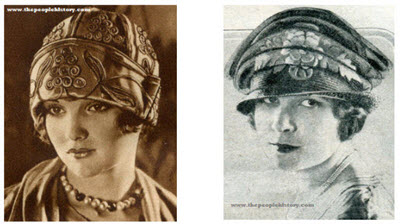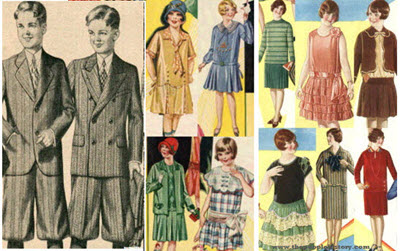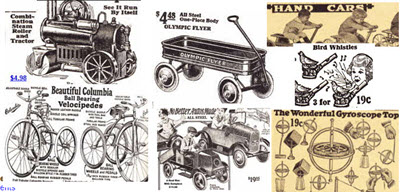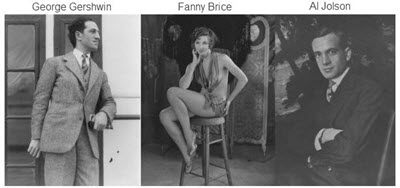1850 to 1859 Important News, Key Events, Significant Technology
1850, 1851, 1852, 1853, 1854, 1855, 1856, 1857, 1858 and 1859 History
Major News Events From 1850 to 1859
- 1850 September 9th California became The 31st state of the United States of America
- 1851 September 18th The New York Times Founded
- 1852 Uncle Tom's Cabin Published
- 1853 Steinway Pianos Founded
- 1854 October 25th The Charge of the Light Brigade
- 1855 The Panama Railway crosses from the Atlantic to the Pacific
- 1856 May 24th The Pottawatomie Massacre
- 1857 The Indian Mutiny against British rule in India
- 1858 Minnesota became The 32nd state of the United States of America
- 1859 May 31st Big Ben rings out over the Houses of Parliament for the first time.
Find More Detailed Information Below
1850
California became The 31st state of the United States of America , Following the defeat of Mexico in the Mexican-American War and settlers rebelling against Mexican rule during the Bear Flag Revolt (1846). California is sold to the United States in 1848 , just two years later due to its large size (third-largest state in the United States in size) and population it becomes the 31st State.
Los Angeles and San Francisco become cities , After California's Spanish and Mexican rule and Mexican War it becomes a U.S. State, which meant that its larger towns were incorporated. Los Angeles, with a population of 1,610, became a city on April 4th, and San Francisco, with a population of about 21,000, became one on April 16th.
1851
The New York Times Founded , First published by Henry Jarvis Raymond and George Jones on September 18th, 1851, under the name of the New York Daily Times. It was intended for production on every day except Sundays. 1851's articles included: Is Europe Ripe for Revolution?, The Expected Arrival of Kossuth at Washington, Cold Weather in the East, and Fugitive Slave Riots in Lancaster Co. Pa.
The America's Cup , The America, a 101 ft schooner, raced against 15 yachts of the Royal Yacht Squadron in the Club's annual 53 mile regatta around the Isle of Wight, the race was for 100 Guinea's. Following the win the race became "The America's Cup". The America’s Cup regatta is a challenge-driven series of match races between two yachts. From 1850 to 1987 American boats were unbeaten, but in 1987 the Australian Team From Royal Perth Yacht Club beat the American with Australia II and beat the United States Team From the New York Yacht Club.
The Great Exhibition/Crystal Palace , The Great Exhibition also known as Crystal Palace constructed from a cast iron frame and glass opens, attracting six million people (equivalent to a third of the entire population of Great Britain) between 1 May to 15 October 1851. It also featured the first public conveniences in use in England/Monkey Closets and during the exhibition 827,280 visitors paid one penny each to use them which is where the British saying "to spend a penny" comes from.
1852
Uncle Tom's Cabin Published , Uncle Tom's Cabin was widely read in both the U.S. and abroad, and its publication is said to have inspired the anti-slavery movement in the 1850's. It was originally produced for the National Era journal, and then as a two volume edition in Boston. Beecher Stowe's work is said to have sold fifty thousand copies in the first eight weeks, and reached half a million copies within the first six months. The book is cited as one of the causes of the Civil War.
The Safety Elevator , Elisha Otis introduced the safety elevator, using an automatic spring operated brake system. When operated, it prevented the fall of the cab if the cable broke.
1853
Steinway Pianos , Originally from Germany, Heinrich Steinway had built organs and pianos, but moved to the United States in 1850, and founded Steinway and Sons in New York in 1853. They dominated the market, and their earliest workshops were in Manhattan.
1854
The Charge of the Light Brigade , Fought in the Battle of Balaclava in the Crimean War of 1854, the Charge of the Light Brigade was ordered, by Lord Raglan, to be sent against the retreating Russian artillery. The instructions were given without his staff having a good enough vantage of the Balaclava plain, and the misdirected attack sent the 11th Hussars, 13th Light Dragoons, 17th Lancers, 8th Hussars and 4th Light Dragoons along the valley to be flanked by the other Russian batteries. The Light Brigade was led by the Earl of Cardigan and about 450 of the brigade's horses were killed. Of the 673 men that took part in the Charge, 195 returned, 113 were killed and the rest had to walk back to the British lines.
Republican Party Founded , The Republican Party is founded by anti-slavery expansion activists, it is often called the Grand Old Party or the GOP, prior to the Democratic Party breaking away from the Democratic-Republican Party and the National Republicans who later evolved into the Whig Party ( 1824 ).
1855
The Panama Railway crosses from the Atlantic to the Pacific , Once described as the inter-oceanic railroad, the Panama Railway Company crossed Panama, from Aspinwall to Panama City. The railroad is still functioning, and was important to the construction of the Panama Canal itself. It has since been called the Panama Canal Railway.
1856
The Pottawatomie Massacre , On May 24th, 1856, John Brown and his Free State volunteers murdered five men that were settled on the Pottawatomie Creek in southeastern Kansas. These were members of the pro-slavery Law and Order Party, but not themselves slave owners. This happened three days after the Missouri Border Ruffians burned and pillaged an anti-slavery haven in Lawrence, and two days after Massachusetts Senator Charles Sumner was severely beaten by Senator Preston Brooks of South Carolina. Brown's actions on the 24th occurred at three different houses. At the one farm, the owner and two of his sons were dragged outside and hacked up with the sabres that had been donated to Brown in Akron, Ohio. Most of the abolitionist community that supported Brown downplayed this stain on his fight against slavery.
1857
The Indian Mutiny , The Indian Mutiny against British rule in India had been begun by Indian troops (sepoys) that were in the service of the British East India Company. The revolt began when the sepoys had refused to use the new rifle cartridges they were given, which were rumored to be lubricated with grease that contained a mixture of pigs' and cows' lard (and as such would be impure to the Hindu and Muslim troops that used them). The refugees were shackled, and their fellow soldiers had used this as an excuse to shoot their British officers and march on Delhi. The campaign's fighting is recorded as being very hard for both sides, and, with the reinforcements that had come from the loyal sepoys and from the other British garrisons had ended in defeat for the mutineers. Its immediate result was that the East India Company was stopped from administering the provinces and a system of direct rule of India by the British government was started. One cause of the Mutiny had been the requirement for Indian troops to serve overseas (which was a threat to their caste. The famous greased (in fact waxed) cartridge that had been introduced that year proved to be the last straw. It had been rumored that they were lubricated with grease from cattle (holy to Hindus) or pigs (unclean to Muslims). On March 29th, the sepoy Mangal Pandy of the 34th Native Infantry refused orders on the parade ground at Barrackpore, and he was hanged. Thereafter the mutineers were known to the British troops as ‘pandies’. The earlier massacres were overshadowed by what took place at Cawnpore, where General Wheeler commanded a small garrison that was defending the approximately 330 women and children that had been in the city. Having negotiated safe passage out of Cawnpore with Nana Sahib, Wheeler took his force and dependants down to the river Ganges and into the waiting boats. The embarkation was brought under heavy fire. Only one boat escaped, but Wheeler and most of the soldiers were killed, leaving only some 200 women and children to be taken prisoner. When news reached the rebels of an approaching relief force they massacred the prisoners and threw their dismembered bodies into a well, which became and remains the cause célèbre of the Mutiny.
1858
Minnesota became The 32nd state of the United States of America , The northernmost of the contiguous states, it became the 32nd state on May 11th , 1858. The largest of the Midwestern states, its capital is Saint Paul, which is twinned with Minneapolis. The Gopher State!
1920's Fashion
Ladies Hats From The Decade


Part of our Collection of Childrens Clothes From the Decade

Childrens Toys From The 1920's
Part of our Collection of Toys from The 1920's

1920s Music
From our 20's Music Page

1859
Harpers Ferry Raid , John Brown's men arrived at Harper's Ferry in Virginia in order to instigate a slave rebellion. Brown's men were attacked by soldiers under Robert E. Lee on October 18th, after which Brown and several of his men were captured. He was hung for murder, treason against the State and for leading a revolt.
Oregon became The 33rd state of the United States of America , Following the number of settlers increasing and the Oregon Treaty between United States and England ( 1846 ), the Oregon Territory was officially organized in 1848. The border between the United States and British North America was set at the 49th parallel.
Big Ben , Big Ben at the north end of the Palace of Westminster in London rings out over the Houses of Parliament in Westminster, London, England on the 31st of May in 1859 for the first time. In over 150 years it has only had one major breakdown on August 5 of 1976 when the speed regulator of the chiming mechanism broke after more than 100 years.
First Oil Well , "Colonel" Edwin Drake used a drilling expert "William Smith" to drill for oil in Titusville, Pennsylvania. "William Smith" drilled down 60ft and oil gushed to the surface (About 20 barrels per day). Prior to this well, oil had been barreled from rock oil (Oil that had made it to the surface and created pools of oil in the rock). Prior to this oil had been discovered when drilling for drinking water but if the oil gushed to the surface it was considered a nuisance and the well was closed down.